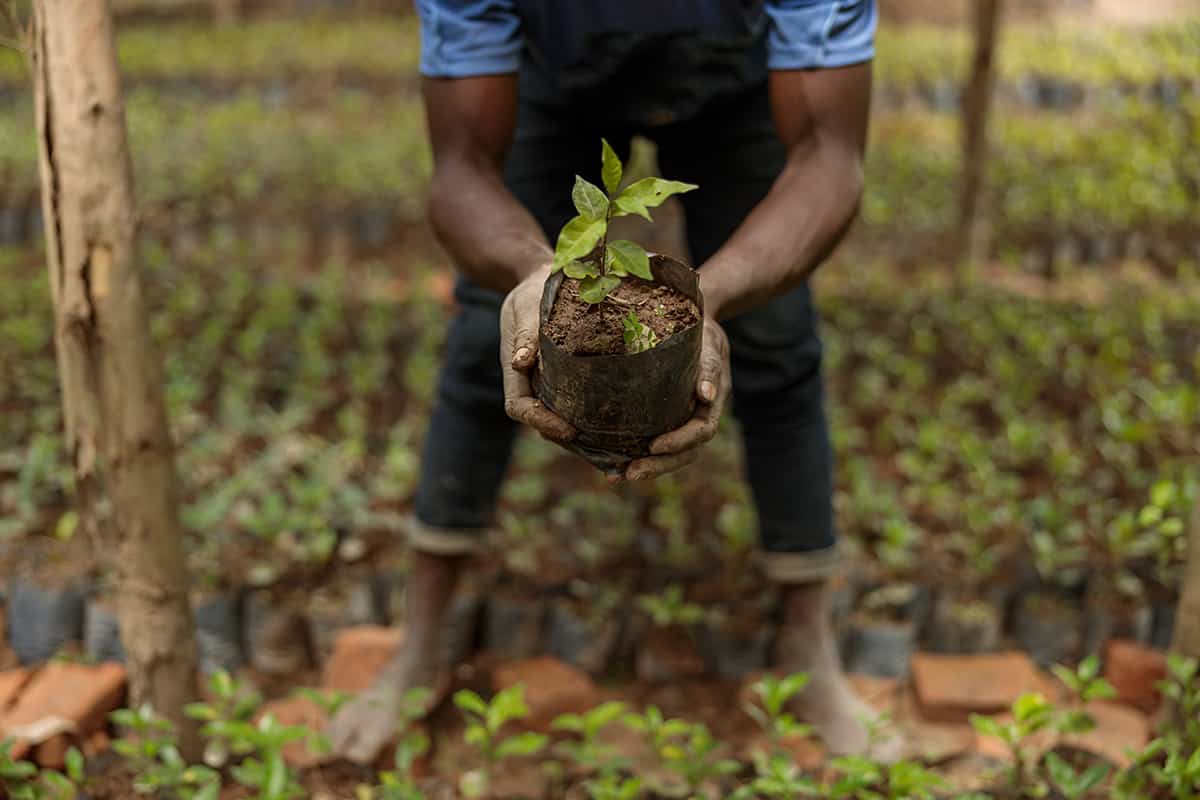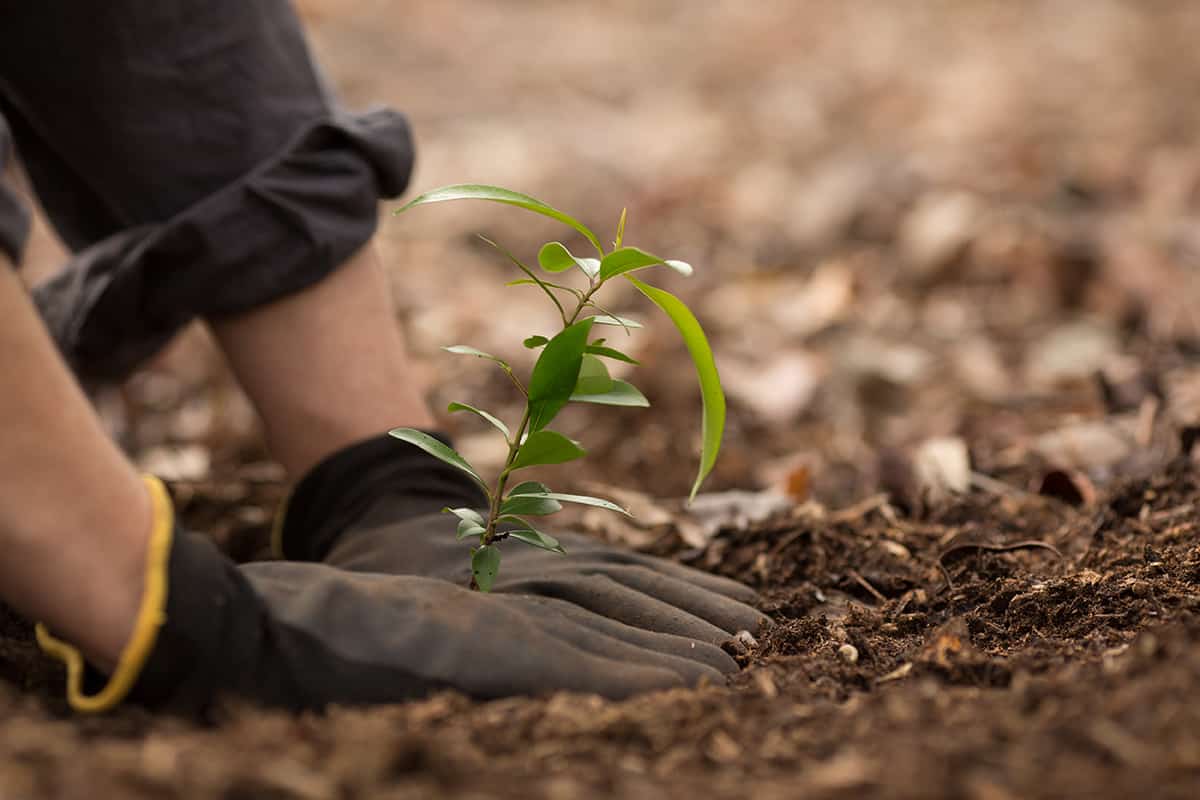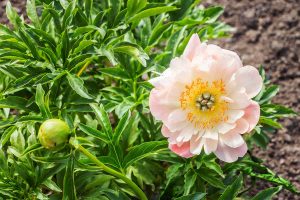Peonies are extremely low-maintenance plants that will actually thrive on neglect if you can plant them in a suitable way.
Getting these plants started on the right track is arguably the most important element of their care. Here we look at how deep in the soil you should plant peonies for a long and healthy life.
Table of Contents
Peony Seed Planting Depth
Most people who grow peonies in their home gardens will buy the plants from nurseries when they are just a few years old, however, if you are looking to grow these plants from seed then planting at the right depth will be vital for successful germination.
Peony seeds should be planted at around 1 inch beneath the surface of the soil. The direction the seed is facing is not important, since the root will find its own way downwards. Ornamental peonies will not germinate if they are exposed to light, so it’s important that the soil is completely covering the seed to prevent any light from seeping in.
You should also take care not to plant the seed any deeper than an inch, because mature peony root systems need to remain in the top layers of the soil. This is essential to the production of their flowers. Planting the seed at a shallow depth of no more than 1 inch will set the plant up for success in the top layers of the soil.
If you are sowing the seeds in small pots or indoors, then the seedlings will eventually need to be transplanted to their permanent spot in the ground soil outside. When doing this, be sure to keep the seedling at the same level in the soil as it was when it germinated.
Peony Plant Planting Depth

If you have bought a peony plant from a nursery then it will likely be between 3 and 5 years old. This is the age that peonies begin to reliably flower. While a 5-year-old peony might sound a little ancient, these are actually long-lived plants that can last for between 50 and 100 years, so your plant will have plenty of life left in it!
Take note of the level your peony is inside its grow pot; this is the same level you should be planting the peony in the ground. If you have purchased a bare root peony, then you need to make sure the eye or bud on the root is sitting at around 2 inches beneath the surface of the soil. Planting the peony at the correct depth is important because it will affect the plant’s ability to produce flowers.
Peonies that have their roots buried too deep in the soil will have an overproduction of foliage, at the expense of the flowers. Since peony plants are predominantly grown for their flowers, it would be disappointing to suffer a lack of flowers simply due to planting the peony a few inches too deep in the ground.
Peonies also hate to be disturbed once they have been planted, so it makes sense to get the depth right the first time around. If you struggle with a lack of flowers and suspect it may be because you planted the peony too deep in the soil, this will be very difficult to correct at a later date without disrupting the plant to the point that it gets stressed.
While you should take care to avoid planting the peony too deep in the soil, you also need to bear in mind that the plant’s roots need to be adequately covered by soil. This will ensure the plant is securely anchored to the ground, and it also offers protection for the roots from extreme temperatures. A depth of 2 inches between ground level and the eye on the root system is ideal.
Should Peonies be Mulched?

As the root systems of peonies should sit at 2 inches below soil level, you may wonder whether mulching over the soil will have a negative effect on the plant by burying it too deeply. This should certainly be a consideration when mulching peonies, and you’ll want to think about whether the benefits outweigh the risks.
If you live in a hot climate where the moisture evaporates quickly from the soil, and therefore the soil is consistently dry, then mulching over the soil is going to be very useful for improving moisture retention and ensuring the plant has the water it needs to grow and bloom. If you aren’t having an issue with moisture retention, then mulching over the soil during spring and summer is not essential.
You can balance out these two conflicting issues by applying a thin layer of mulch, measuring no more than an inch, in an attempt to keep the peony roots as close to the surface as possible. In winter, you may wish to mulch to insulate the soil in cold regions. This should be removed in late winter or early spring so that it doesn’t increase the distance between the ground surface and root level during the plant’s growth period.
Best Soil Type for Peonies
As well as planting your peony at the appropriate depth, you also need to ensure the soil the peony is planted in is suitable. Peonies thrive in fertile soil but they will also adapt to other soil types. They are not especially fussy when it comes to the texture of pH level, as long as the soil is well-draining, Peonies cannot tolerate wet or waterlogged soils, so soil that drains well is essential to the long-term health and survival of the plant.
If you have clay soil then you can amend this before planting the peony by working sand and organic compost into the soil. This will improve both its drainage and its nutrient quality. If the soil drains too freely, for example, if it is sandy or gravelly, then the roots may not get a chance to absorb the moisture and nutrients they need. In this instance, adding compost to the soil will increase its ability to retain moisture.






